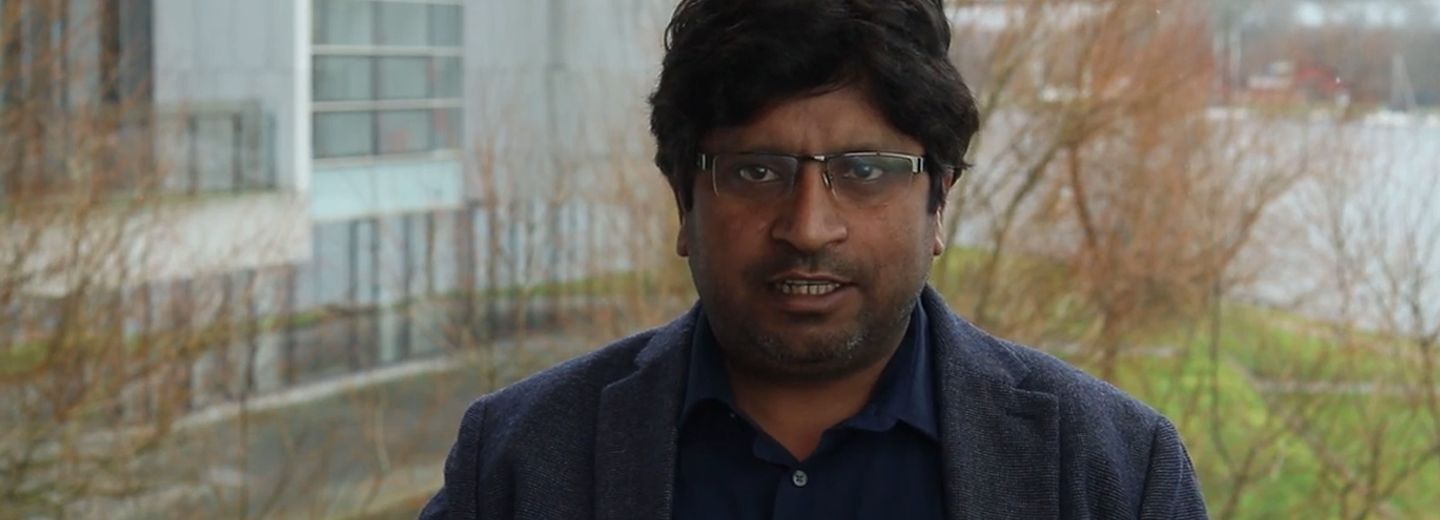
MCI upgrades its research within smart materials – hires professor Yogendra Kumar Mishra
There is a strong upgrade going on at the Mads Clausen Institute at SDU. Professor Yogendra Kumar Mishra was hired, which ensures a unique position of strength of the research within three-dimensional smart materials.
If you skip down through world history, you’ll see that the different time periods are named by the materials that has been prevalent at that point in time: The Stone Age, the Bronze Age and the Iron Age.
The last decades, silicon stood for the electronic transformation that has made our modern way of life possible with smartphones and what else belongs to it, but we’ve got news for you: The future is here now, and it is smart.
Smart materials are going to form the technological landscape
The future belongs to the smart materials, you see. Smart materials are materials that have one or more properties that change when exposed to, e.g., light, heat, humidity, electricity or magnetism.
We already find clothing that changes its colour under rising temperatures, and earlier this year, Samsung launched a bendable mobile phone.
At the Mads Clausen Institute at SDU, we conduct intense research within smart materials, and this focus has now been further intensified by hiring professor Yogendra Kumar Mishra who comes from a position at Kiel University. Here, the professor was heading a research group that worked on interconnected ceramic nano-networks, for one thing.
Bendable coffee cup
And what is this, then? Well, let’s take an example: Imagine that you drop your favourite coffee cup, but instead of it breaking into a thousand pieces as it hits the floor, it lands softly as if it was a kitchen sponge. This is some of what Yogendra Kumar Mishras research can do – to give e.g. ceramics other properties than those that ceramics is naturally equipped with. Actually, nano research is, to a large extent, about copying nature and transferring and applying these techniques in other contexts and in connection with other materials.
Of course, the above example is funny and a story that professor Yogendra Kumar Mishra can use to entertain at festive occasions, but his research has far-reaching perspectives that are much more serious, and which, as a matter of fact, can make our world a better place to be.
Can cure herpes
For instance, professor Yogendra Kumar Mishra and his former colleagues at Kiel University have contributed to developing a cream that cures the herpes variant HSV-2.
- By applying the cream, you add zinc oxide nanoparticles to your blood. The virus attaches itself to these particles instead of the red blood cells and it is them easier for the white blood cells to kill the virus, Yogendra Kumar Mishra explains. The cream is expected to be launched on the market within a year.
Energy efficiency
Yogendra Kumar Mishras research can also be used in connection with energy efficiency which is an important research field if the world is to overcome the climate crisis that we are facing.
- It is about making green energy smaller, cheaper, better and more efficient. here, nanowires are an important part of the process, but even though they are inexpensive per se, they are very expensive to produce because this requires cleanrooms and a lot of costly processes. We are developing a method that makes it both easy and inexpensive, says Yogendra Kumar Mishra.
Smart windows
An example for an energy efficient product that originates from Yogendra Kumar Mishras research are smart windows. These are equipped with a UV filter which regulates the windows’ transparency and thus not only, how much sunlight you get into your eyes but also how much heat that can pass through them. This works as a form of isolation which, in the long run, will let thick insulating glass be history.
- We are unbelievably proud that we succeeded in attracting a capacity like Yogendra Kumar Mishra to MCI. The field of research fits to SDU’s efforts within Industry 4.0 where MCI will focus strongly on smart materials. This meets those requirements for materials and integration that apply to future Industry 4.0 developments, says head of institute Horst-Günter Rubahn.
Yogendra Kumar Mishra published more than 75 articles in high profile research magazines, and he is board member of several international conferences. Yogendra Kumar Mishra commenced his position as professor at SDU on 1 November 2019.